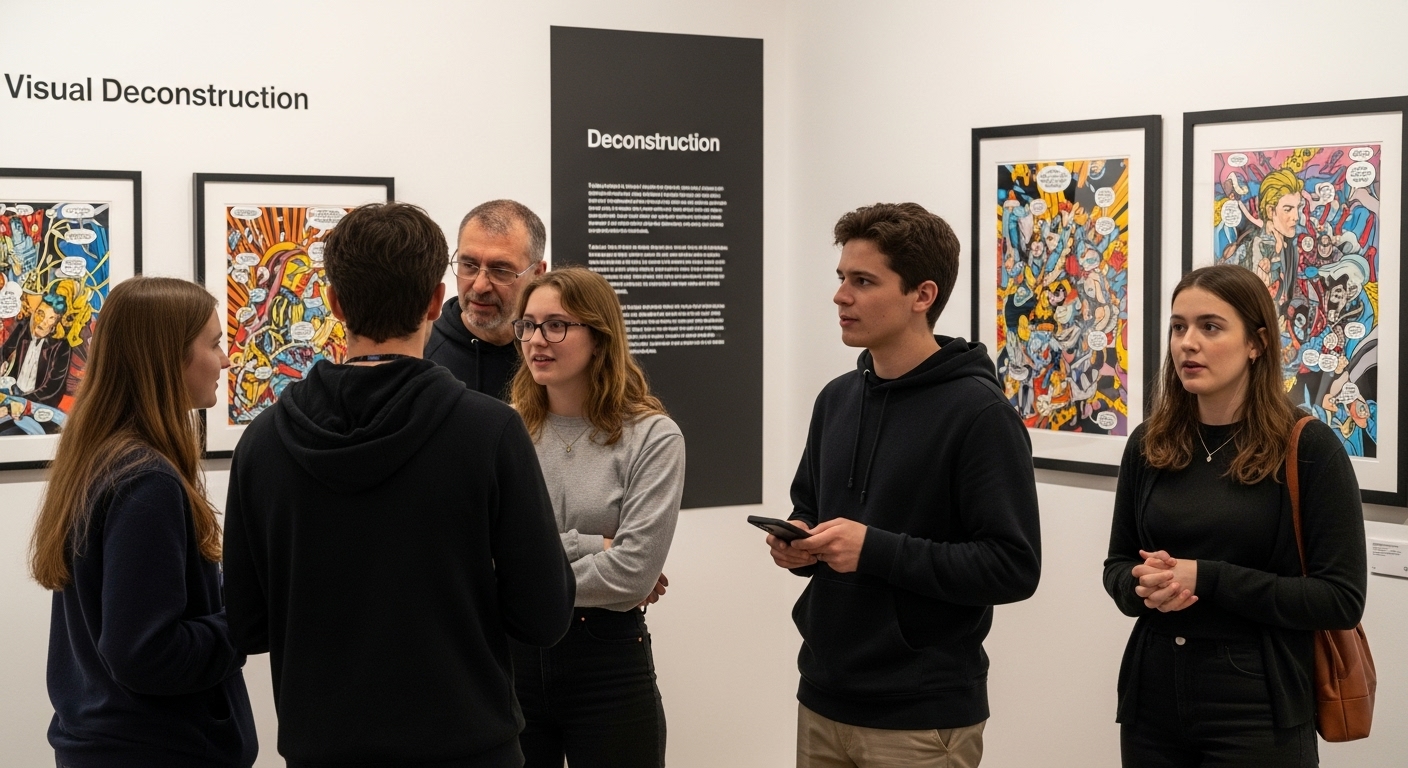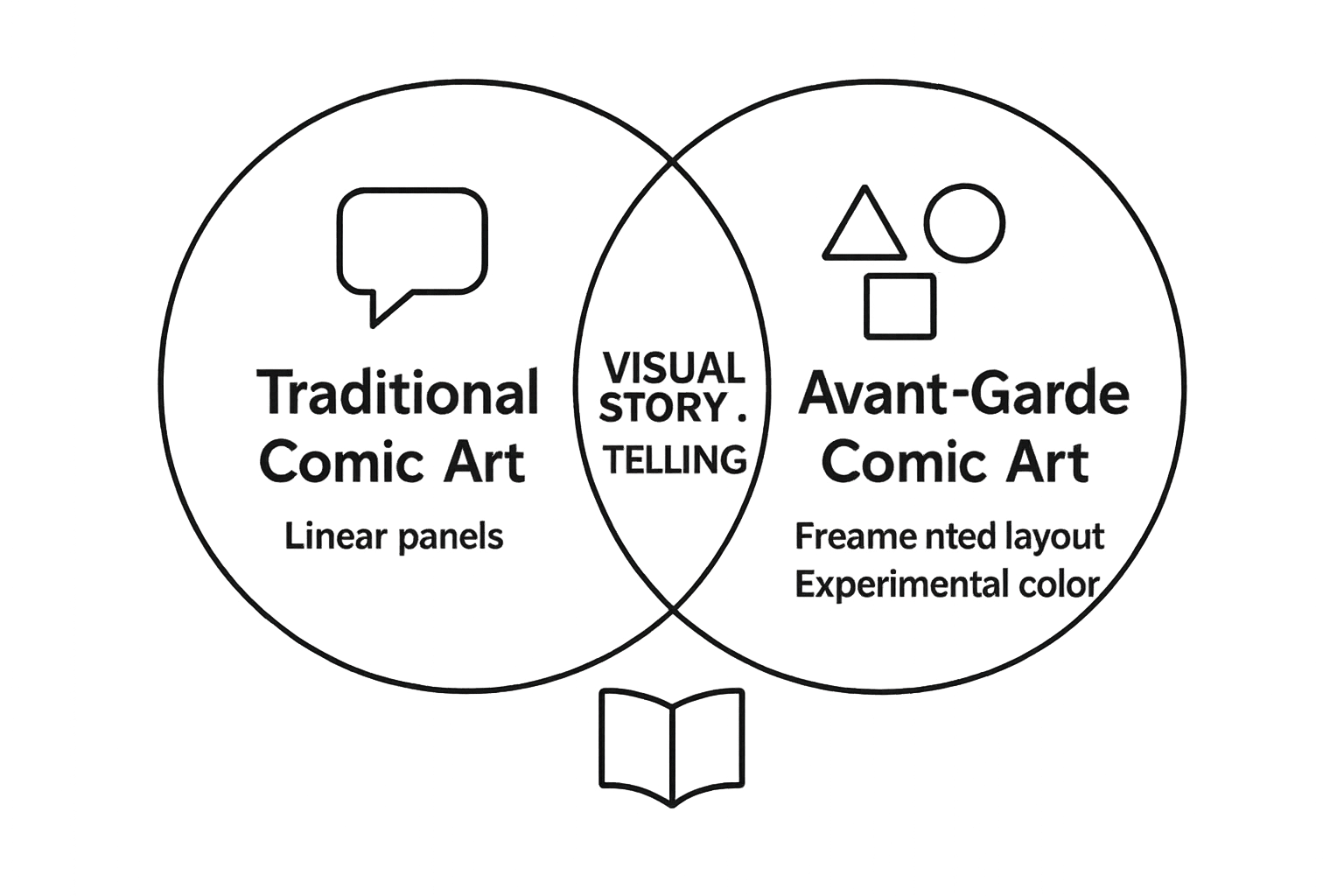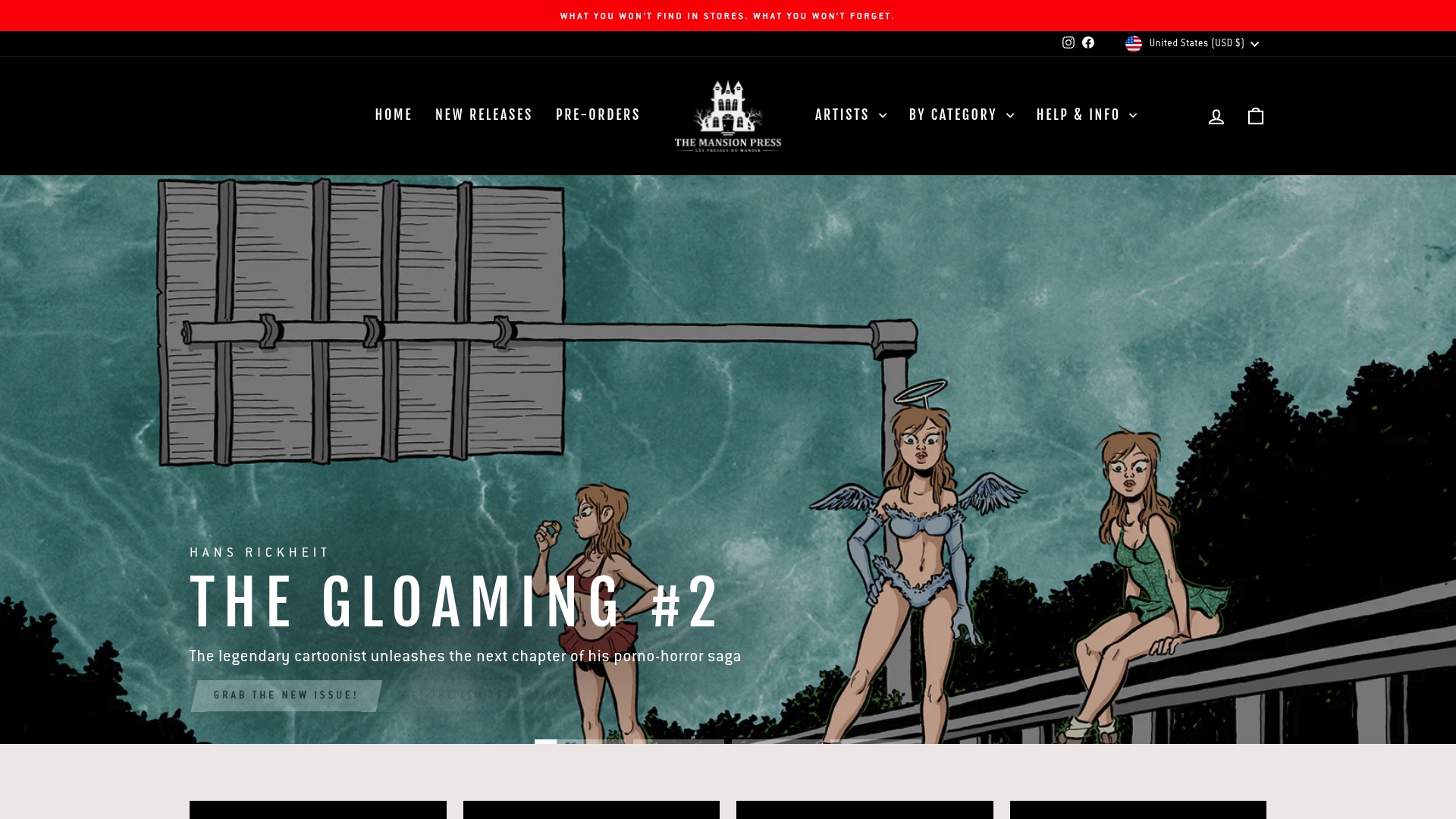Understanding Avant-Garde Comic Art Styles
Avant-garde comic art styles go far beyond what you find in Sunday funnies or glossy superhero adventures. Some of the most eye-catching works use techniques so radical that they reject mainstream rules completely and focus on pure experimentation. What might surprise you is just how deep their impact runs. Studies show that avant-garde comics are key drivers in transforming comics from simple entertainment into complex platforms for intellectual and emotional expression.
Table of Contents
- What Are Avant-Garde Comic Art Styles?
- The Importance of Avant-Garde in Comics
- Key Characteristics and Techniques
- The Evolution of Avant-Garde Comic Art
- Avant-Garde Influences in Modern Comic Art
Quick Summary
| Takeaway | Explanation |
|---|---|
| Avant-garde comics challenge traditional norms | They disrupt conventional visual storytelling and invite new interpretations and experiences. |
| Radical experimentation is key | Artists intentionally break rules to create complex narratives and visual representations. |
| Conceptual depth is prioritized over linearity | This approach favors layered meaning and intellectual engagement, moving beyond simple narratives. |
| Technological advancements enhance creativity | Modern tools allow for innovative storytelling methods and broader artistic expression. |
| Avant-garde art fosters cultural dialogue | It serves as a platform for exploring diverse perspectives on social and philosophical issues. |
What are Avant-Garde Comic Art Styles?
Avant-garde comic art styles represent radical artistic approaches that systematically challenge traditional visual storytelling conventions within graphic narrative mediums. These innovative styles transcend conventional comic book aesthetics by introducing experimental techniques, unconventional narrative structures, and revolutionary visual representations that push creative boundaries.
Defining Characteristics of Avant-Garde Comic Art
Understanding avant-garde comic art requires recognizing its core philosophical and aesthetic principles. These artistic expressions are fundamentally defined by several distinctive attributes:
- Radical Experimentation: Deliberately breaking established visual communication rules
- Conceptual Complexity: Prioritizing intellectual and emotional depth over traditional narrative formats
- Visual Deconstruction: Challenging standard panel layouts and sequential storytelling methods
According to research exploring graphic narrative innovations, avant-garde comic styles fundamentally reject mainstream artistic expectations. Artists working within this framework seek to dismantle visual storytelling paradigms, creating works that provoke intellectual engagement and emotional responses beyond conventional comic book experiences.
Theoretical Foundations and Artistic Philosophy
Avant-garde comic art emerges from broader modernist and postmodernist artistic movements, drawing inspiration from various experimental art forms. These styles represent more than aesthetic choices they constitute philosophical statements about artistic representation, challenging viewers to reconsider their understanding of visual narrative.
Key theoretical foundations include subverting expected visual hierarchies, introducing non-linear storytelling techniques, and incorporating abstract visual metaphors that transcend literal interpretations. Artists deliberately fragment traditional narrative structures, using visual techniques that destabilize readers’ expectations and create multilayered interpretative experiences.
While traditional comics typically follow predictable panel progressions and representational styles, avant-garde comic art embraces complexity. Visual elements become conceptual tools for communication, where form itself becomes a critical component of narrative meaning.
To clarify how avant-garde comic art differs from traditional styles, the following table compares their key characteristics and techniques side by side.
| Aspect | Traditional Comic Art | Avant-Garde Comic Art |
|---|---|---|
| Visual Structure | Predictable, linear panel layouts | Fragmented, non-linear panel arrangements |
| Narrative Approach | Clear, linear storytelling | Non-linear, complex, multi-layered storytelling |
| Artistic Techniques | Representational illustration, standard typography | Experimental typography, abstract visuals |
| Color Usage | Naturalistic, consistent palettes | Unconventional, often non-naturalistic colors |
| Reader Engagement | Passive consumption | Active interpretation and critical engagement |
| Purpose | Entertainment, straightforward plots | Intellectual, emotional, and philosophical exploration |
 Artists transform graphic storytelling from straightforward illustration into a sophisticated medium of intellectual and emotional expression.
Artists transform graphic storytelling from straightforward illustration into a sophisticated medium of intellectual and emotional expression.
The Importance of Avant-Garde in Comics
Avant-garde comics serve as transformative vehicles that fundamentally challenge and expand the artistic and narrative potential of graphic storytelling. By disrupting conventional visual communication patterns, these innovative approaches reinvent how stories are conceptualized, presented, and experienced by audiences.
Artistic Innovation and Medium Evolution
The significance of avant-garde comics extends far beyond aesthetic experimentation. These artistic approaches represent critical mechanisms for pushing the boundaries of visual narrative, introducing radical methodologies that continuously redefine the comic art form. By challenging established visual communication protocols, avant-garde artists create spaces for profound artistic exploration.
Key contributions of avant-garde comics include:
- Expanding Narrative Possibilities: Breaking linear storytelling conventions
- Challenging Visual Representation: Introducing unconventional graphic techniques
- Encouraging Critical Engagement: Prompting readers to actively interpret visual narratives
According to research exploring avant-garde comics, these artistic approaches function as essential catalysts for medium evolution, transforming comics from simple entertainment into sophisticated platforms for intellectual and emotional expression.
Cultural and Intellectual Significance
Avant-garde comics play a crucial role in broader cultural discourse by offering unique perspectives on social, political, and philosophical themes. These artistic expressions transcend traditional storytelling limitations, enabling creators to communicate complex ideas through innovative visual languages.
Artists working within avant-garde comic styles effectively deconstruct established visual communication hierarchies. They transform graphic storytelling from representational illustration into a nuanced medium capable of profound conceptual exploration. By challenging readers’ perceptual expectations, avant-garde comics encourage more active, interpretative engagement with visual narratives.
Moreover, these experimental approaches serve as critical platforms for marginalized voices and alternative perspectives. By rejecting mainstream aesthetic norms, avant-garde comics create intellectual spaces where unconventional narratives can emerge, fostering greater artistic diversity and cultural understanding.
Key Characteristics and Techniques
Avant-garde comic art techniques represent sophisticated approaches that radically transform visual storytelling through innovative graphic design, narrative structure, and conceptual representation. These methods deliberately challenge traditional comic book conventions, creating complex visual experiences that demand active reader interpretation.
Visual Design and Structural Innovations
The visual techniques employed in avant-garde comics go far beyond conventional illustration, introducing revolutionary methods of graphic representation. Artists systematically deconstruct traditional panel layouts, experimenting with non-linear spatial arrangements that disrupt standard reading patterns and visual expectations.
Key visual design characteristics include:

- Fragmented Panel Structures: Challenging linear narrative progression
- Experimental Typography: Using text as a dynamic visual element
- Unconventional Color Palettes: Rejecting naturalistic color representations
According to research exploring modernist comic art techniques, these approaches transform comics from simple sequential art into complex intellectual and emotional communication platforms.
Narrative and Conceptual Techniques
Beyond visual design, avant-garde comics deploy sophisticated narrative strategies that fundamentally reimagine storytelling. Artists deliberately incorporate multilayered narrative techniques, using visual metaphors, abstract representations, and conceptual disruptions to challenge readers’ perceptual and interpretative frameworks.
These narrative techniques frequently involve:
- Subverting traditional character development
- Introducing non-linear temporal sequences
- Blending multiple narrative perspectives simultaneously
Artists working in this style transform comics from straightforward visual storytelling into complex intellectual experiences. They create works that require active engagement, interpretation, and critical thinking from their audience.
Moreover, avant-garde comic techniques serve as powerful vehicles for social commentary and philosophical exploration. By breaking conventional narrative structures, artists can communicate complex ideas that traditional storytelling methods cannot effectively convey, making avant-garde comics profound tools for intellectual and artistic expression.
The Evolution of Avant-Garde Comic Art
The trajectory of avant-garde comic art represents a complex narrative of artistic rebellion, cultural transformation, and continuous reinvention. From its nascent stages in early 20th-century experimental movements to contemporary digital platforms, this art form has consistently challenged established visual communication paradigms.
Historical Roots and Modernist Foundations
Avant-garde comic art emerged from broader modernist artistic movements, drawing inspiration from Dadaism, Surrealism, and early 20th-century graphic experimentations. These foundational influences introduced radical approaches to visual representation, fundamentally questioning traditional artistic conventions and narrative structures.
Key historical developmental stages include:
- Early Experimental Movements: Challenging representational norms
- Underground Comix Revolution: Introducing countercultural perspectives
- Graphic Novel Emergence: Elevating comics as serious artistic medium
Research examining comic art exhibitions reveals how these artistic movements progressively transformed comics from popular entertainment into sophisticated cultural expressions.
Technological and Cultural Transformations
Technological advancements have dramatically accelerated avant-garde comic art’s evolution. Digital platforms and graphic design tools have expanded artists’ creative possibilities, enabling more complex visual storytelling techniques and reducing traditional production constraints.
Contemporary avant-garde comic artists leverage multiple technological and cultural innovations:
- Integrating digital illustration techniques
- Exploring interactive narrative formats
- Challenging global cultural representation norms
These developments have democratized comic art creation, allowing artists from diverse backgrounds to experiment with visual storytelling approaches. The result is a continuously expanding artistic landscape that transcends traditional geographic and cultural boundaries.
Moreover, avant-garde comic art has increasingly become a critical medium for social commentary, philosophical exploration, and cultural critique. By persistently challenging aesthetic norms and narrative conventions, these artistic approaches remain dynamic vehicles for intellectual and emotional expression.
This table highlights major historical stages that have shaped the evolution of avant-garde comic art, summarizing each period’s core influence within the field.
| Historical Stage | Key Influence on Avant-Garde Comic Art |
|---|---|
| Early Experimental Movements | Broke representational norms and introduced radical visual experimentation |
| Underground Comix Revolution | Brought countercultural perspectives and unconventional topics |
| Graphic Novel Emergence | Elevated comics to serious artistic and literary status |
| Digital Era | Enabled complex visual storytelling through technological advancements |
Avant-Garde Influences in Modern Comic Art
Modern comic art has been profoundly transformed by avant-garde artistic movements, which have fundamentally reshaped visual storytelling approaches, narrative complexity, and artistic representation. These influences extend far beyond stylistic experimentation, representing critical intellectual and creative interventions in graphic narrative traditions.
Artistic Movements and Conceptual Transformations
Avant-garde art movements have introduced revolutionary conceptual frameworks that radically redefine comic art’s potential. Surrealism, Cubism, and Dadaism particularly contributed sophisticated techniques that challenge traditional visual communication paradigms.
Key conceptual influences include:
- Fragmentation of Visual Narrative: Disrupting linear storytelling
- Symbolic Representation: Using visual metaphors beyond literal interpretation
- Emotional Abstraction: Expressing complex psychological states graphically
According to research exploring modernist comic art influences, these artistic movements transformed comics from entertainment media into sophisticated platforms for intellectual and emotional expression.
Interdisciplinary Artistic Dialogue
Modern comic art represents a dynamic intersection of visual art, literature, and graphic design. Avant-garde influences have encouraged artists to view comics as multilayered communication systems rather than simple sequential illustrations.
Contemporary comic artists increasingly integrate cross disciplinary techniques:
- Incorporating performance art concepts
- Exploring multimedia narrative strategies
- Challenging traditional graphic representation boundaries
These approaches demonstrate how avant-garde principles continue to expand comic art’s creative possibilities. Artists now perceive comics as flexible intellectual spaces where visual storytelling can transcend conventional narrative limitations, creating complex, multidimensional experiences that engage readers on intellectual and emotional levels.
Moreover, avant-garde influences have democratized comic art creation, empowering artists to experiment with unconventional techniques and perspectives. By continuously challenging established artistic norms, these approaches ensure that comic art remains a dynamic, evolving medium of cultural expression.
Discover and Collect Avant-Garde Comic Art Today
Have you ever been inspired by the radical experimentation and bold visual storytelling described in “Understanding Avant-Garde Comic Art Styles”? If so, you know the frustration of searching for unique and innovative comic works, only to find the same mainstream selections everywhere. Many collectors and readers seek out exclusive artbooks, limited-edition comics, and original avant-garde artworks that push the boundaries of what comics can be, but finding these rare treasures is often a challenge.

At The Mansion Press, we bridge this gap by curating a selection of authentic avant-garde comics and original art from independent creators around the world. Explore detailed artist showcases, shop collector’s editions, and pre-order groundbreaking releases—all on one visually immersive platform. Begin your search for the next evolution in graphic storytelling right now. Visit The Mansion Press to experience the future of comic art before it reaches the rest of the world. Secure your place among the first to own these rare and provocative pieces—supplies are always limited, so start your collection today.
Frequently Asked Questions
What are avant-garde comic art styles?
Avant-garde comic art styles represent radical and experimental approaches that challenge traditional visual storytelling conventions within graphic narratives, incorporating innovative techniques and unconventional structures.
What are the key characteristics of avant-garde comic art?
Key characteristics include radical experimentation in visual communication, conceptual complexity prioritizing intellectual depth, and visual deconstruction that challenges standard panel layouts and narrative methods.
How do avant-garde comic techniques differ from traditional comic techniques?
Avant-garde comic techniques differ by employing fragmented panel structures, experimental typography, and non-linear narratives, creating complex visual experiences that require active interpretation from the reader.
Why are avant-garde comics important in contemporary culture?
Avant-garde comics are important because they serve as transformative vehicles for expanding narrative possibilities, encouraging critical engagement from audiences, and offering unique perspectives on social, political, and philosophical themes.

